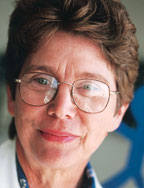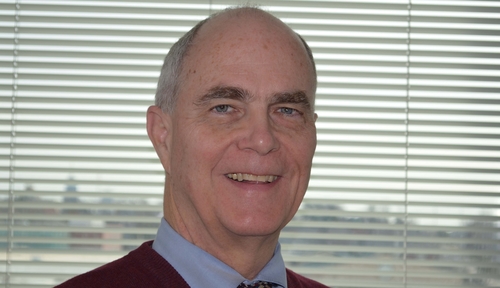In 1982, Nebraskan James Armitage, M.D., launched one of the most successful bone marrow transplant programs in the world for the treatment of blood cancers. The first bone marrow transplant was done on April 1, 1983.
The following is an excerpt from an interview with Dr. Armitage.
Read the full interview with Dr. Armitage
What have been some of the contributions of UNMC’s transplant program for lymphomas?
|
|
We’ve made contributions in a variety of ways. When I came here, I intended to build a lymphoma study group. When we started doing transplants, I wanted to have a program that focused on lymphoma. We started doing a new thing which is autologous transplants – where you take normal bone marrow cells from a patient, give them intensive therapy for the lymphoma, thaw out those frozen cells and give them back to reestablish the function of their bone marrow. That’s what we started out doing primarily.
For a time I think we were doing more transplants for lymphomas than anywhere else in the country. Our first transplants were mostly auto transplants for lymphomas.
 |
Anne Kessinger, M.D. |
At that time no one knew if it could cure lymphoma or not. There were a number of publications in the 1980s that showed that did work. We showed you could predict for whom they’d work based upon if the patient’s lymphoma was in remission, how well they were, and if the patient’s cancer was still responding to traditional therapies. That led to a paper in the New England Journal of Medicine back in 1989.
Anne Kessinger showed that we could do the same thing with blood-derived cells rather than bone marrow derived cells. You could argue that we did the first blood-derived autologous transplant successfully. There were people who tried to do it five, six, seven, eight years before, but it did not work because they did not get enough cells. There was a group in Adelaide, Australia, a group in Germany and our group that at the same time in the same year, published papers that showed the transplant could be done and that it worked.
We were the first team to do an allogeneic blood cell transplant for leukemia.
So we helped show you could do this for lymphoma and cure it. We showed that you could use blood-derived cells to do the same thing, which has become, after working out all the technical issues, the standard way to do it.

Doctors Kessinger and Armitage deserve statues in front of our building. They are great physicians and great humans. Dan Schafer
Jim, a remarkably productive career of persistence and imagination. Patients everywhere are in your debt.
John Benson
DR A, I would like you to look at my records to see if I'm a candidate for a Stem cell transplant. My mom is submitting my records to you as we speak.